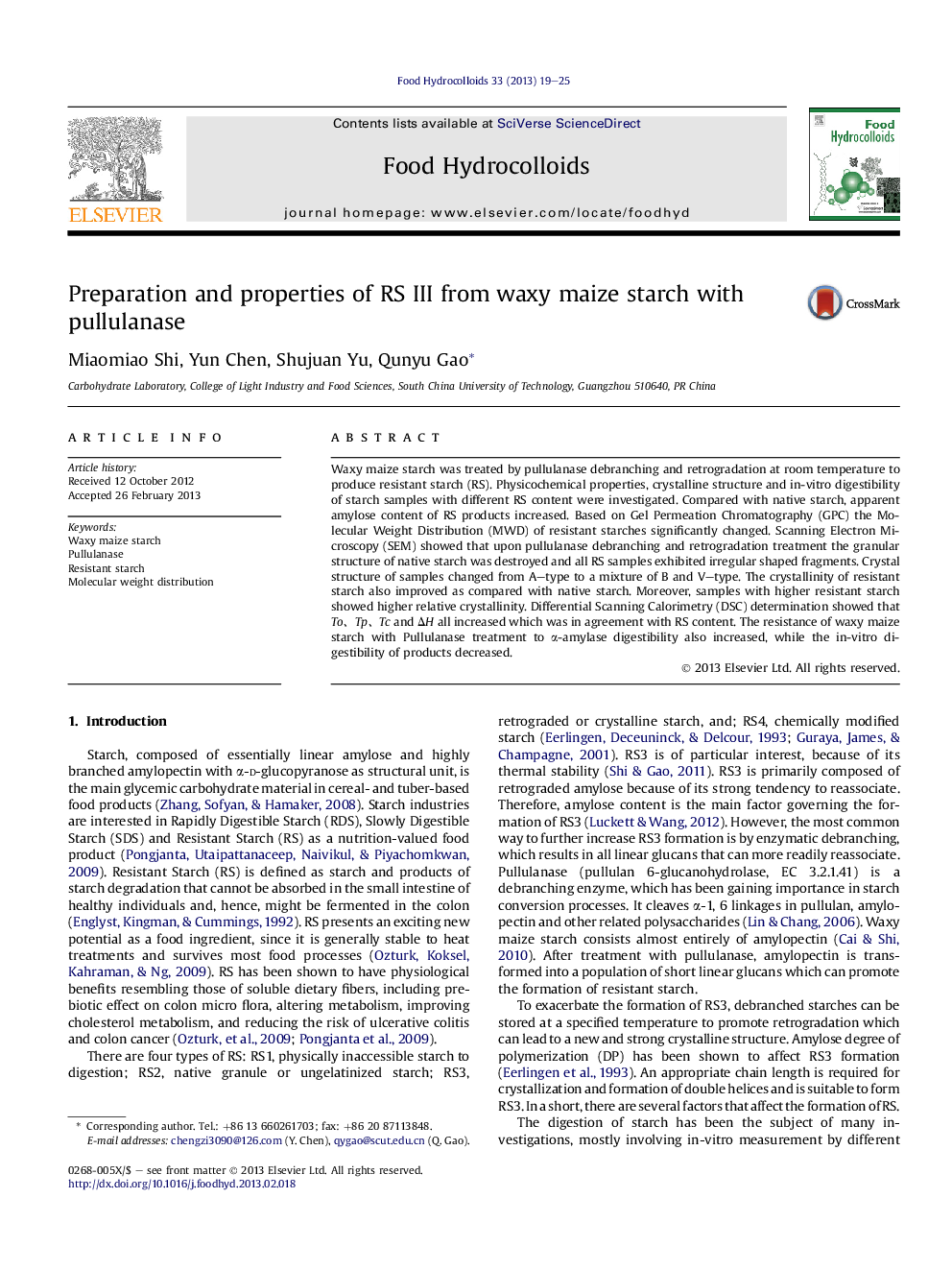| کد مقاله | کد نشریه | سال انتشار | مقاله انگلیسی | نسخه تمام متن |
|---|---|---|---|---|
| 604572 | 880316 | 2013 | 7 صفحه PDF | دانلود رایگان |

Waxy maize starch was treated by pullulanase debranching and retrogradation at room temperature to produce resistant starch (RS). Physicochemical properties, crystalline structure and in-vitro digestibility of starch samples with different RS content were investigated. Compared with native starch, apparent amylose content of RS products increased. Based on Gel Permeation Chromatography (GPC) the Molecular Weight Distribution (MWD) of resistant starches significantly changed. Scanning Electron Microscopy (SEM) showed that upon pullulanase debranching and retrogradation treatment the granular structure of native starch was destroyed and all RS samples exhibited irregular shaped fragments. Crystal structure of samples changed from A–type to a mixture of B and V–type. The crystallinity of resistant starch also improved as compared with native starch. Moreover, samples with higher resistant starch showed higher relative crystallinity. Differential Scanning Calorimetry (DSC) determination showed that To、Tp、Tc and ΔH all increased which was in agreement with RS content. The resistance of waxy maize starch with Pullulanase treatment to α-amylase digestibility also increased, while the in-vitro digestibility of products decreased.
Figure optionsDownload as PowerPoint slideHighlights
► Waxy maize starch was treated by cooking, pullulanase debranching and retrogradation to produce resistant starch (RS).
► The molecular weight (MW) distribution of resistant starches significantly decreased.
► The digestion rate of resistant starch decreased with increasing incubation time.
Journal: Food Hydrocolloids - Volume 33, Issue 1, August 2013, Pages 19–25